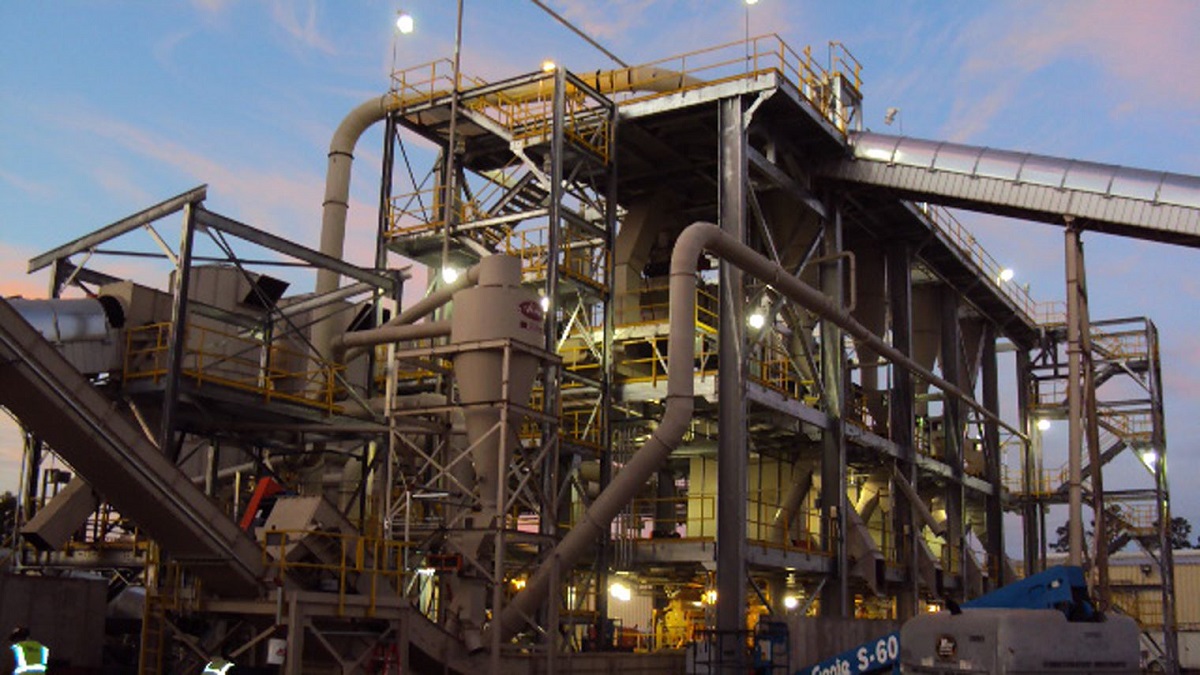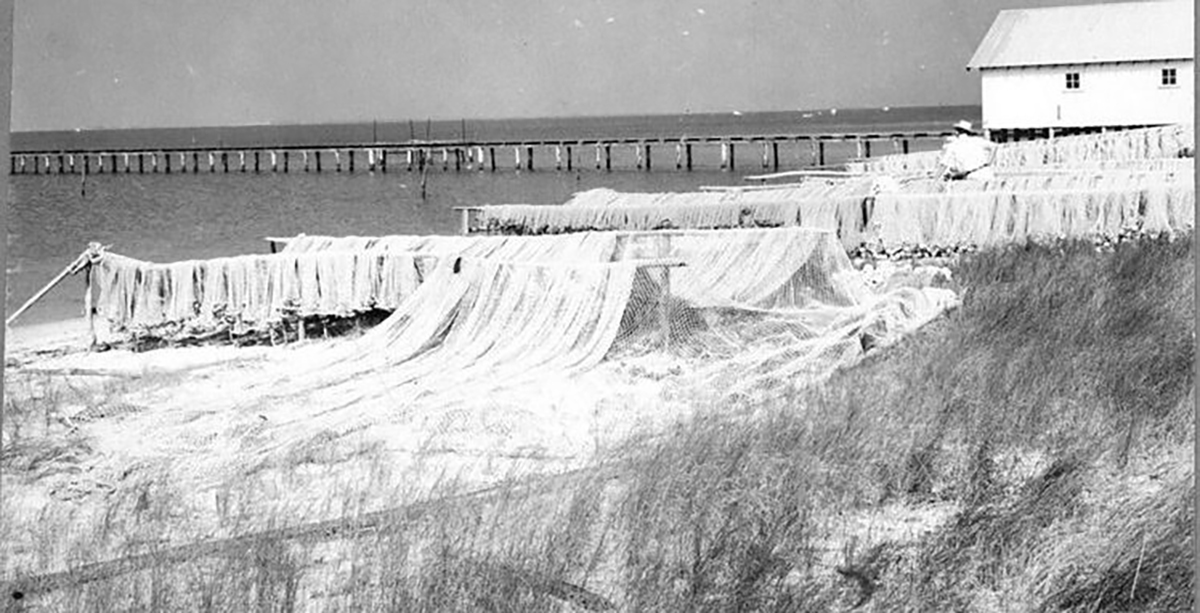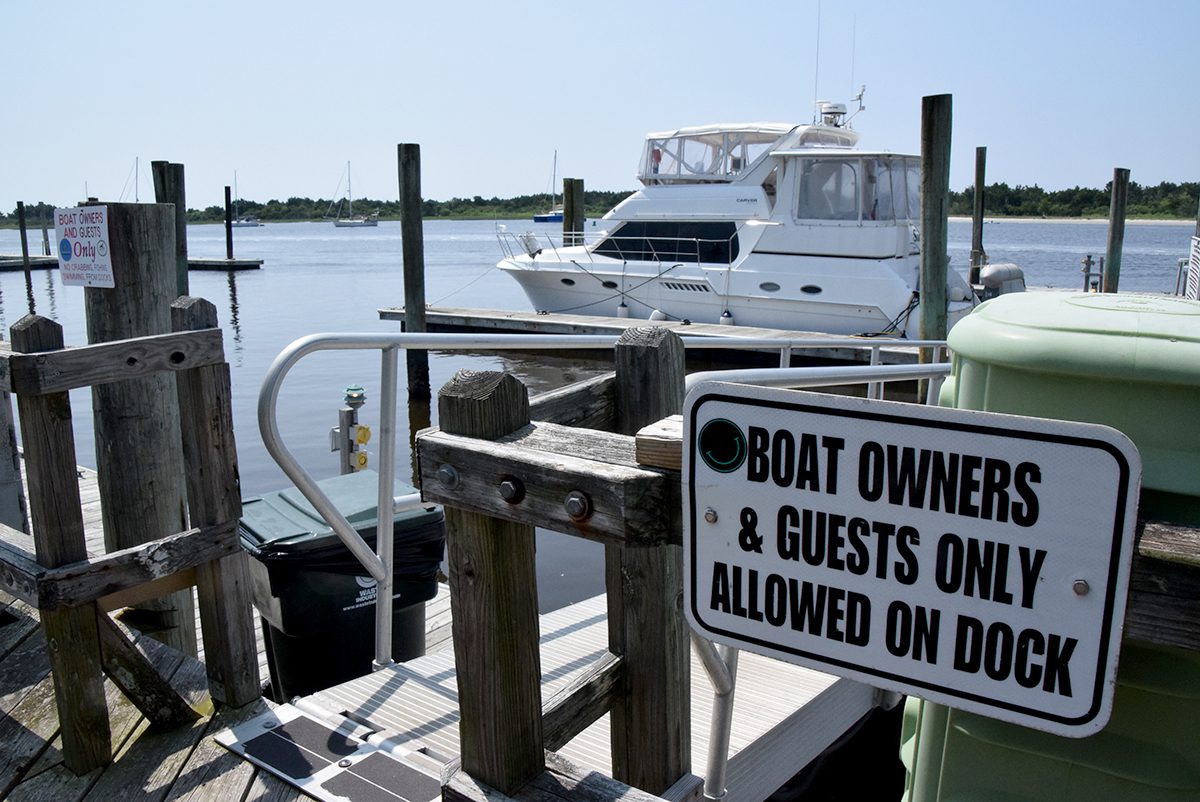
The state has put on hold final action on a controversial draft air quality permit for Enviva’s Ahoskie Plant to increase its wood pellet production by more than 30%.
Enviva submitted the request to increase its output from 481,800 oven dried tons to 630,000 oven dried tons per year in August 2020. The draft permit went before the public in July of this year.
Supporter Spotlight
The deadline for action on the air quality permit was Nov. 28, but after hearing concerns, particularly about air pollutants from the plant and its location in the economically distressed Hertford County, from the public and the DEQ Secretary’s Environmental Justice and Equity Board, Division of Air Quality officials said the deadline no longer applies.
No final action had been taken as of Monday, Dec. 5, Shawn Taylor, public information officer for the division, told Coastal Review.
“In response to questions raised by the board, DAQ determined that our rules did not require final action by Nov. 28, as we had earlier stated,” Taylor explained. He continued that the division is considering the concerns raised during the specially called environmental justice board meeting held Nov. 17 in Raleigh before taking final action.
“DEQ appreciates the Environmental Justice and Equity Advisory Board’s attention to this issue and the board providing an additional forum where community voices can be heard,” he continued. “Through its permitting and compliance programs, the Division of Air Quality has required significant reductions of dust and other air pollution emissions from all the Enviva Pellets facilities in North Carolina. The Division will continue to use permitting and non-permitting methods to address concerns raised by residents in Ahoskie and other communities near these facilities.”
The division first permitted Enviva Pellets, LLC – Ahoskie Plant in 2010 and it began manufacturing in November 2011. The plant in Hertford County is one of four Enviva plants in the state with the others in Sampson, Richmond and Northampton counties.
Supporter Spotlight
All four are designated Tier 1 counties, or economically distressed, by the N.C. Department of Commerce, the board explains in a letter dated Sept. 27 to the Department of Environmental Quality Secretary Elizabeth Biser about the proposed permit.
“Every North Carolina biomass facility is in a community that is at least 25% non-white with slow growing or declining populations and high poverty rates,” the letter continues. Hertford County is home of the Meherrin Tribe and is 60% African American. The census area the facility will be located in is 69% African American. Hertford County has a poverty rate of almost 22%, ranking in the bottom 25% of counties for health outcomes determined by the commerce department, and has a death rate that exceeds the statewide death rate.
Enviva in North Carolina
The state Division of Air Quality received on Aug. 28, 2020, a permit modification request from Enviva to increase production from 481,800 oven dried tons to 630,000 oven dried tons per year at the Ahoskie plant.
The division requested more information on the Title V renewal with modifications. Enviva submitted an addendum in December 2020. In December 2021, the company submitted a new Title V renewal and modification application to replace the first draft permit with additional proposed changes, Air Quality Division Director Mike Abraczinskas, said during the special meeting.
Abraczinskas explained that each Enviva plant in the state holds Title V permits, required by the Clean Air Act. The permits are legal documents that include pollution control requirements from federal or state regulations that apply to a source, according to the EPA. The federal agency’s regional offices oversee the state programs that issue these permits.
Air pollutants from wood pellet manufacturing include particulate matter emitted from multiple parts of the manufacturing process, as well as volatile organic compounds, toxic air pollutants and hazardous air pollutants, primarily emitted from drying and milling operations. Carbon monoxide, sulfur dioxide and nitrogen oxides are released from drying operations, and greenhouse gasses are emitted by pollution controls such as thermal oxidizers that burn other pollutants to destroy them, according to the division.
Abraczinskas said some of the original permits under Title V, or major source, for the facilities were developed in 2010 and began production in 2011. Once facilities began operating and executed some testing required in the initial permits, the division saw that the emissions in some cases were higher than what was anticipated, and were major sources for prevention of significant deterioration and hazardous air pollutants.
“Those emissions being higher caused a problem from our perspective. In some cases, they were not in the right permit. In some cases, they were in direct violation of the permit that we had issued,” he said. Staff pursued a variety of enforcement actions for the four facilities to get the right permit and install proper controls to reduce air pollution at the sites.
After a settlement with Enviva in 2019, facilities were required to apply for and install equipment to control emissions. After the new controls are installed as scheduled in their permits, each facility will be minor sources under the state prevention of significant deterioration permitting program or below major sources for hazardous air pollutants thresholds.
Because the division required Enviva to install more stringent controls to reduce emissions of volatile organic compounds, hazardous air pollutants and particulate matter, emissions have declined even as production increased, Abraczinskas said. The facilities requested production increases in most cases.
Most recently, the division drafted a modified air quality permit for Enviva Ahoskie, the last plant of the four undergoing adjustments necessary to address compliance, Abraczinskas explained. The draft permit would require the facility to install the same pollution control devices already required at the other three Enviva facilities in the state.
Abraczinskas said when the draft permit went to public comment July 13, the division began an outreach effort in collaboration with the DEQ’s environmental justice team, including the public hearing in Ahoskie Aug. 16, public notices, and community outreach.
As a result of the public input process, Abraczinskas said the division made some changes to the draft permits, including a requirement to update the fugitive dust plan to develop strategies to control fugitive dust emissions from all new sources. The division also added hydrogen chloride stack testing requirements for hazardous air pollutant emissions and conditions to limit hazardous air pollutant emissions. Also, the plant will be required to test during the construction phase of the project.
These changes were made to the draft permit before the start of EPA’s 45-day review period Sept. 29. EPA had no further comments in its Nov. 9 response, Abraczinskas said.
“I’ll emphasize no final action has been taken at this time. But after updating the draft permit based on the recommendations from both the hearing officers report and all the comments received during the comment period, and after EPA’s 45-day review, which just concluded with a response of no further comments or concerns with the draft permit,” he said.
The division’s engagement with facilities like Enviva don’t end when the permit is issued, but is the beginning, he explained. The division makes unannounced inspections of these types of facilities every year, which he said is more frequent than what EPA requires. The permit also requires the facilities submit reports for staff to make sure data is in line with monitoring parameters and metrics in the permit.
Abraczinskas explained that for noise complaints, the division does not have the authority to put anything in the air quality permit for those but they do see what ordinances exist in the area to include in the response.
Community voices
Dr. Ruby Bell, a Sampson County resident, presented to the board on behalf of The Impacted Communities Against Wood Pellets Coalition.
The coalition is a group of residents impacted by the pollution, dust, noise and forest destruction of the biomass wood pellet industry, and the forest protection and environmental justice organization, Dogwood Alliance, she said. Coalition members have been studying the impacts of the wood pellet industry since the first plant opened in Ahoskie in 2011.
The wood pellets industry does not advance North Carolina’s clean energy economy, “Yet NCDEQ has continued to approve permits to expand wood pellet production in North Carolina. Enviva has received nearly $10 million dollars in subsidies in North Carolina,” Bell said.
The current Enviva permit application under consideration for the Ahoskie plant requires the installation of air pollution controls, but is also allowing the plant to greatly expand production, “resulting in more dust pollution, foot traffic, forest destruction and the increase of some harmful toxins.”
Enviva should install these air controls at Ahoskie, but their request for expansion warrants further consideration, Bell explained before sharing with the board the coalition’s eight recommendations, beginning with denying Enviva’s permit to expand production at the Ahoskie plant, and require them to install pollution controls.
Other recommendations include requiring Enviva to install fugitive dust plans at all facilities and strengthen their existing fugitive dust plan in Ahoskie, install air quality monitoring within a quarter-mile of the facility, install continuous emissions monitoring to capture fluctuations in emissions, and acknowledge and measure the greenhouse gas emissions of industrial logging and the wood pellet industry in the state.
Additionally, the coalition recommends addressing noise pollution through limiting Enviva’s nighttime operations and/or coordinating with local towns to address noise ordinance violations.
DEQ should recognize their obligation under Title VI of the Civil Rights Act of 1964 to consider disproportionate impacts, and deny permits such as this one that adversely impact communities of color and require Enviva to consult with the Meherrin Tribe prior to any issuance of a permit for expansion, Bell said.
La’Meshia Whittington, a member of the advisory board and the North Carolina Black Alliance deputy director of programs, said, “We have to understand that Tier 1 counties have been the target communities by which these corporations.”
The counties are chosen for the natural resources that many community leaders work to maintain and protect, “but also because it’s economically distressed, meaning that that community and its local leaders are going to choose a corporation because it’s the promise of jobs, even though, unfortunately, it comes with health disparities that our community members don’t deserve,” she continued.
The Department of Commerce ranks health impacts and health factors annually in addition to economic distress. The two different ranking systems provide the measure of overall current health and health outcomes of each county. The 2022 health factors and health outcomes have the four counties where Enviva plants are ranked in the bottom 50 for both systems.
“We have to understand when assessing environmental justice communities, cumulative impact means that if your environment is contaminated, it leads to diseases and cancers you wouldn’t have had,” she said.
An extensive body of scientific evidence shows that long- and short-term exposure to fine particulate pollution, also known as fine particulate matter, can cause premature death, harmful effects in the cardiovascular system, including increased hospital admissions and emergency department visits for heart attacks and strokes, and links to respiratory effects like asthma attacks, Whittington explained.
Major pollutants in Hertford County include nitrogen oxide, carbon dioxide and carbon monoxide. Carbon monoxide exposure can lead to serious tissue damage, nitrogen oxide exposure can lead to respiratory infections and asthma, and sulfur dioxide is causing an increased risk of hospital admissions or emergency room visits.
She said she acknowledges that the reality is there are policies and red tape that prevent state departments from being able to engage with the permitting process beyond what they’re doing.
She recommends engaging with local elected leaders and asking how long the industry is committed to staying in the area and providing jobs, because wood pellets are not a long-term industry. Rather it’s a short-term industry subject to international market demand.
Enviva response
Enviva provided the following email response Monday to a request for comment:
“At Enviva, we understand being a successful business includes more than providing well-paid jobs and creating a positive economic impact; it entails being an integral part of the communities we call home and demonstrating environmental leadership, including in the way we operate our facilities and engage with our communities. We invest in our plants and make them the most environmentally controlled facilities in the industry, with best-in-class emissions control technology to minimize any impact from our operations on neighbors and communities.
“We test our facilities regularly with a third-party expert and those test results are made available to the public by the state regulatory agencies, in addition to air monitoring performed in the vicinity of our plants, which all confirm that the air quality in our communities is in compliance with strict environmental laws and regulations, including the U.S. Clean Air Act.
“As part of our community relations efforts, we engage with our communities in advance of any of plan for new plant construction or expansions as well as in the course of our continued operations, to answer questions and address any concerns from our neighbors while also providing our support to the communities’ needs. We also work closely with state regulatory agencies throughout the entire permitting process to involve broad public participation and educate our communities about our plans, permitting process and operations.
“Specific to Ahoskie: We are currently waiting to receive the Air Quality Permit for our Ahoskie plant following a thorough review by North Carolina’s Department of Environmental Quality (NC DEQ) and the EPA. This permit would authorize us to begin installing and operating additional state-of-the-art emission control equipment—including a regenerative thermal oxidizer (RTO), and a regenerative thermal or catalytic oxidizer (RTO/RCO)—to support the expansion of our plant.”







